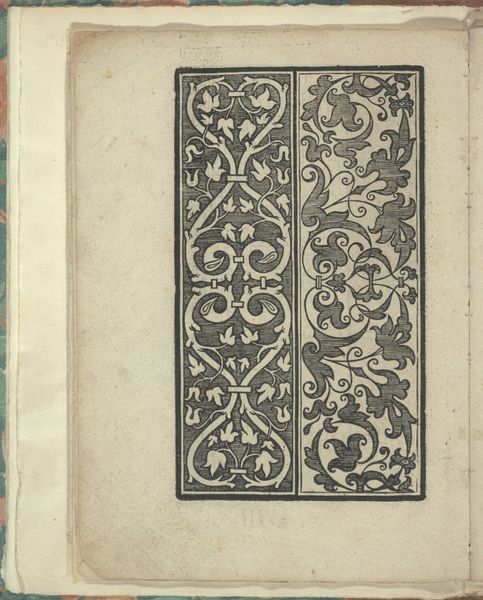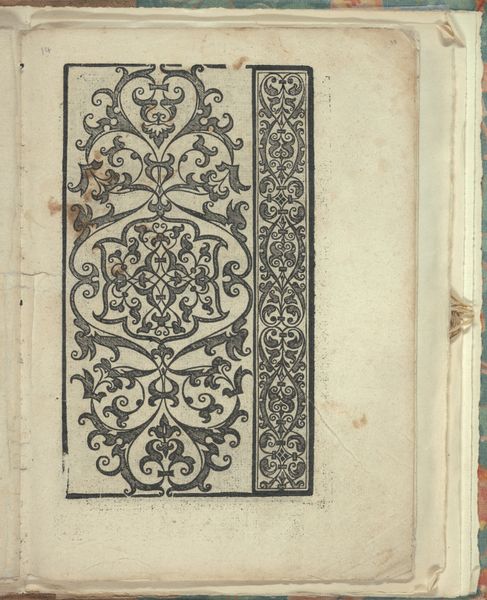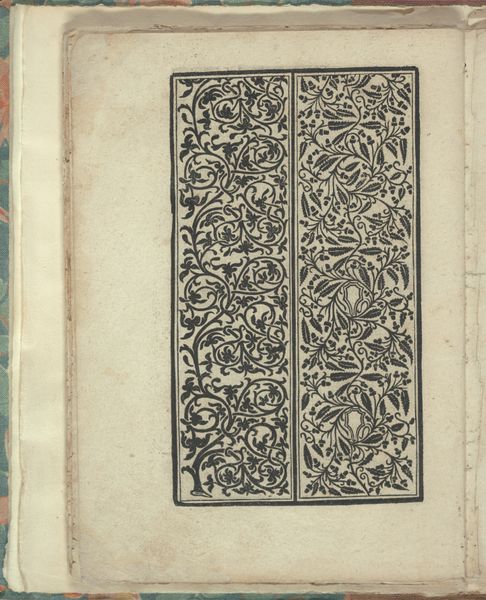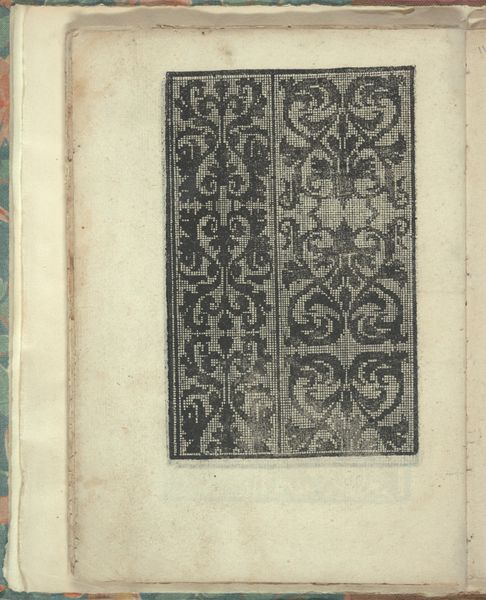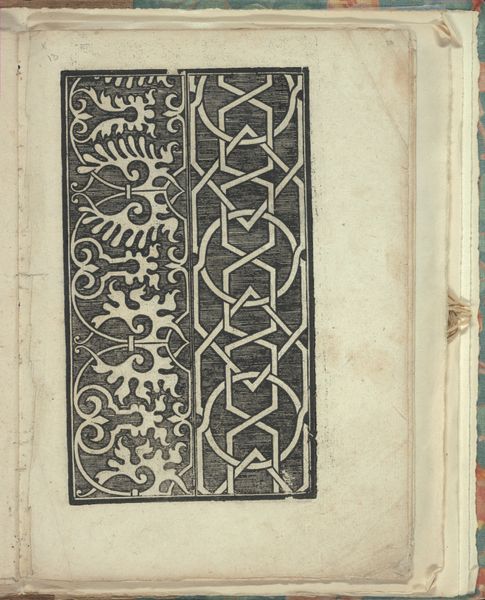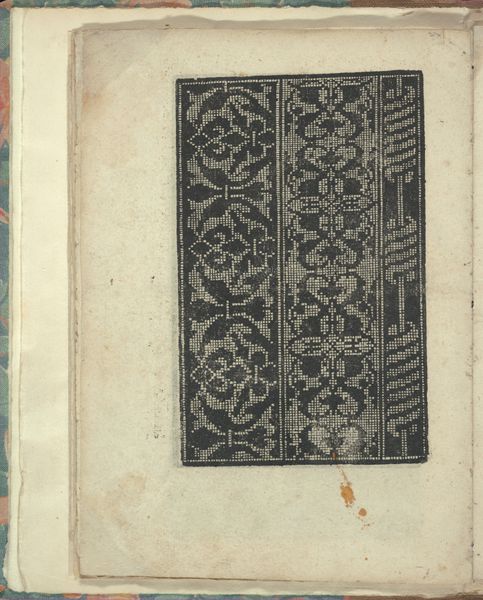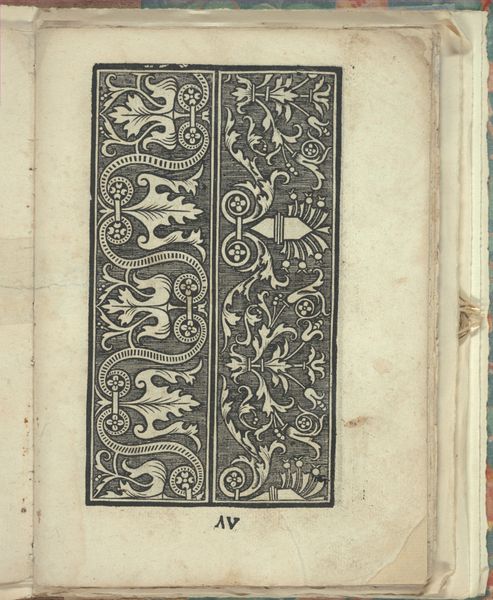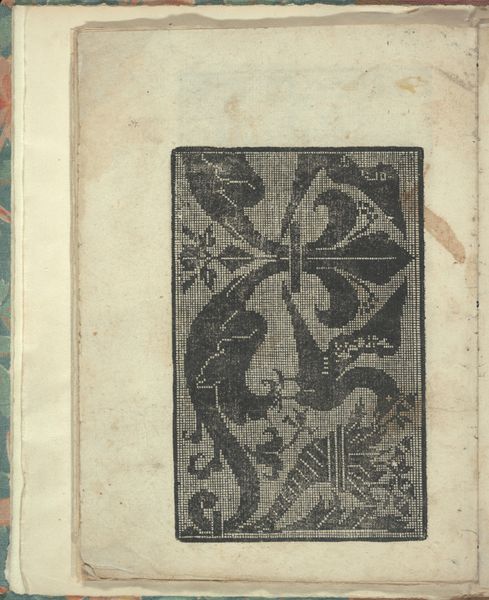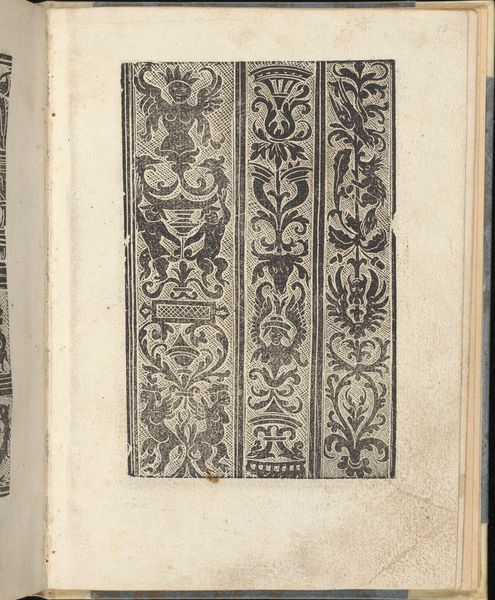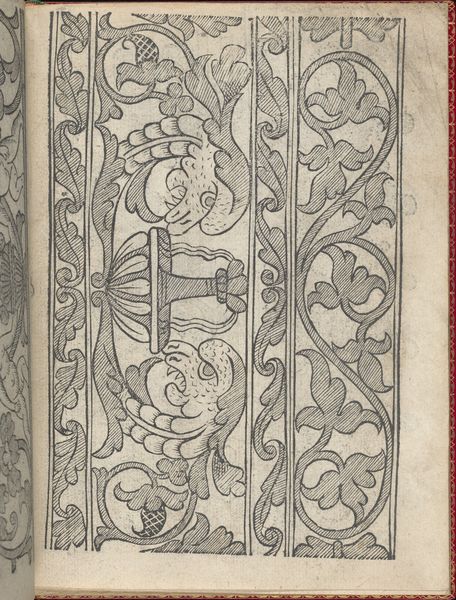
Opera Nova Universali intitulata Corona di racammi, page 12 (verso) 1530
0:00
0:00
drawing, print, ink, woodcut
#
drawing
# print
#
11_renaissance
#
ink
#
geometric
#
woodcut
#
line
#
decorative-art
#
italian-renaissance
Dimensions: Overall: 8 7/8 x 6 7/8 in. (22.5 x 17.5 cm)
Copyright: Public Domain
Curator: Looking at this intriguing print, we see "Opera Nova Universali intitulata Corona di racammi, page 12 (verso)" created around 1530 by Giovanni Andrea Vavassore, currently held at the Metropolitan Museum of Art. It is a beautiful example of decorative art from the Italian Renaissance. Editor: My initial impression is the stark contrast between the two distinct panels. The negative space pops—giving the vines on the left this ethereal quality and conversely grounding the right panel with that solid inky ground. Curator: Indeed. This image, like many in Vavassore's "Corona di racammi," was intended as a pattern book for embroidery. Think of its function—circulating designs, influencing fashion and domestic crafts. It reflects the period’s burgeoning interest in ornamentation, and how that period viewed visual ideas and ornamental ideas for textiles. Editor: Precisely. The woodcut medium is crucial. This was a way to reproduce designs quickly and affordably, making them accessible to a wider range of artisans and craftspeople. The line work shows careful attention to detail. Imagine the skill required to carve these delicate patterns into wood, especially for something mass-produced and widely used. Curator: These weren’t just idle designs. The book signifies the increasingly vital role printed materials had in disseminating patterns. The publication speaks volumes about the professional lives of artisans. It represents their access to resources and their exposure to a wider aesthetic conversation across Italy at this time. Editor: Absolutely. Plus, look closely. The floral motifs aren’t arbitrary. There's a symbolism at play here – leaves of vine implying themes of fertility and abundance, prevalent motifs throughout Italian art of the era. Also consider the consumption of these patterns. Did the act of reproduction cheapen the design, or give it new value? Curator: That tension is central. The very act of circulating design through printing democratized the artistic landscape, challenging notions of unique artistic genius that started gaining ground around the same time. Editor: Studying these patterns as remnants gives us a rare look into the economics and politics of labor. It's like a visual database connecting artistry, materials, and techniques and shedding light on workshop realities. Curator: Examining "Opera Nova" has shown us not only Renaissance visual tastes but also highlights the socioeconomic factors shaping artistry. Editor: Absolutely. These humble, functional pattern pages contain within them, layers of insight on craftsmanship, economic transformation, and early modern values.
Comments
No comments
Be the first to comment and join the conversation on the ultimate creative platform.
